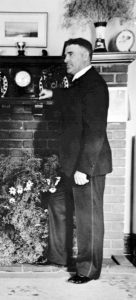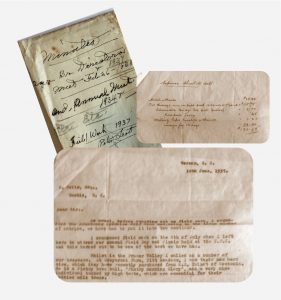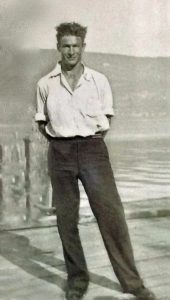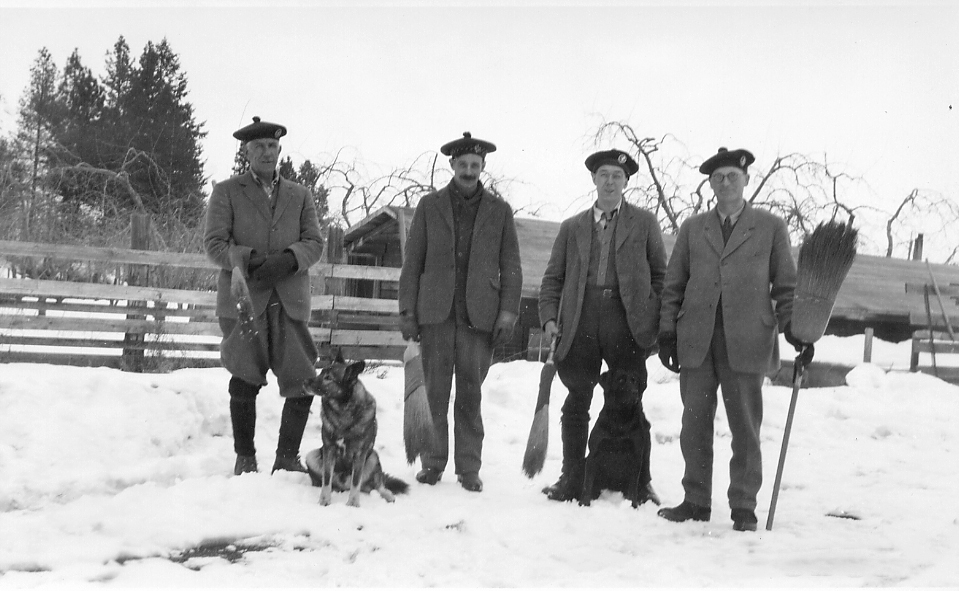Estate Managers and Dairy Workers
James Dun‑Waters employed several estate managers, with Angus Gray at Fintry for the longest time. Most of the men in management positions and many of the dairymen were of Scottish origin.
In 1910, Dun‑Waters first selected his cousin James Godwin as his heir. Godwin had farming experience in South Africa and was encouraged to become manager and future beneficiary of the new Fintry estate. Sadly, Godwin brought more from his previous post than experience – a decidedly racist view of the world that didn’t sit well with Dun‑Waters. Godwin however remained as manager until 1922, when the relationship deteriorated further after the Dun-Waters returned from the war. The break was difficult, with Dun‑Waters paying Godwin $40,000 severance (the equivalent of $400,000 today) in lieu of the promised inheritance.
Dun‑Waters next enlisted brothers, Guy and Ronald Pym, as ranch managers, with the main duty of managing Fintry’s High Farm of Hereford beef cattle. The Pyms suffered a series of difficulties, either from inexperience as ranch managers or with beef cattle. The first year, High Farm lost $50,000. Dun‑Waters fired the Pym brothers and sold off most of the Herefords.
Putting the losses behind him, Dun‑Waters began a new cattle operation, importing Ayrshires from his native Scotland and constructing the octagonal dairy barn. He hired Angus Gray as general manager. Under Gray’s skilled authority, Fintry flourished, in spite of the difficult circumstances of that year (1924). Gray continued as estate manager for 24 years, continuing on with the Fairbridge Farm School after Dun‑Waters’s death.
The dairy operation thrived, with a number of men working under Angus Gray. The dairymen had to be available at specific times every day for milking, feeding and mucking out. They also helped with the orchards, packinghouse, the Hereford beef cattle, and in winter, were part of Dun‑Waters’s curling team.
Peter Scott was one of the longest-serving dairymen at Fintry, from the 1920s through the 1930s. He also held the position of “field man” for the region, helping to arrange sales of the Fintry Ayrshires. Through the 1930s, Scott escorted the Ayrshires in national and international sales, returning to Fintry after they were settled.
Art Harrop joined the Fintry crew as a milker in 1933, at the age of 18. Art recalls his dairyman days,
“I milked Fintry Honeysuckle for two years, and she was givin’ out 120 lb of milk a day. I’d milk her every four hours when I first went there and I never got a holiday for two years. I had to milk her because a change of hand and she’d go right down. In those days people didn’t have holidays anyways. They didn’t have coffee breaks either, though we used to have a smoke time.”
In 1936, health problems forced Art to transfer to orchard and packinghouse work. He and his wife Marie remained at Fintry until 1947.
Enjoy the video, Art Harrop with a transcript
The dairy operation employed many workers and had a usual staff of four to six men. Others mentioned in Gray’s records are Dave Lawson (foreman), Frank Mann (herdsman), and in later years even Gray’s son Ewan.





